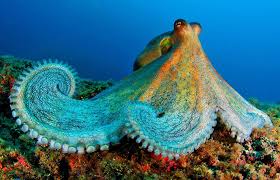Exploring the Marvels of Sea Life: A Journey into the Depths

The Wonders of Sea Life
Exploring the depths of the ocean reveals a world teeming with fascinating creatures and ecosystems. Sea life, with its diversity and beauty, never fails to capture our imagination and awe.
From graceful dolphins and majestic whales to colorful coral reefs and intricate seahorses, the ocean is home to a vast array of marine life. Each species plays a unique role in maintaining the delicate balance of the marine ecosystem.
One of the most incredible aspects of sea life is its adaptability. Creatures like the octopus can change their color and texture to blend seamlessly with their surroundings, while deep-sea fish have evolved to survive in extreme pressure and darkness.
Unfortunately, sea life faces numerous threats from human activities such as overfishing, pollution, and climate change. It is crucial that we take steps to protect these precious creatures and their habitats for future generations to enjoy.
Whether you’re snorkeling in a tropical paradise or watching a documentary about deep-sea creatures, sea life never fails to inspire wonder and appreciation for the natural world.
4.
- What are the different types of sea creatures?
- How do sea animals breathe underwater?
- What is the biggest creature in the ocean?
- How do marine animals communicate with each other?
- What are the main threats to sea life?
What are the different types of sea creatures?
The ocean is home to a diverse range of sea creatures, each with its own unique characteristics and adaptations. From the smallest plankton to the largest whales, the variety of marine life is truly astounding. Some common types of sea creatures include fish, mammals, crustaceans, mollusks, and cephalopods. Fish come in all shapes and sizes, from colorful tropical fish to massive sharks. Marine mammals like dolphins, seals, and whales are known for their intelligence and social behavior. Crustaceans such as crabs and lobsters have hard exoskeletons that protect their bodies, while mollusks like octopuses and clams have soft bodies and often intricate shells. Cephalopods, including squids and cuttlefish, are known for their advanced nervous systems and ability to change color and texture. The diversity of sea creatures is a testament to the richness of marine ecosystems around the world.
How do sea animals breathe underwater?
Sea animals have adapted various mechanisms to breathe underwater, depending on their species. Many marine creatures, such as fish and whales, have gills that extract oxygen from the water as it passes through their respiratory system. Gills contain thin filaments that absorb oxygen and release carbon dioxide. Other sea animals, like dolphins and seals, are mammals that must come to the surface to breathe air through their blowholes or nostrils. Some species, such as sea turtles, can hold their breath for extended periods while diving underwater. Overall, the diverse ways in which sea animals breathe underwater showcase the remarkable adaptations that enable them to thrive in their aquatic environments.
What is the biggest creature in the ocean?
Many people wonder about the largest creature in the ocean, and the answer lies with the magnificent blue whale. Known as the largest animal on Earth, the blue whale can grow up to lengths of over 100 feet and weigh as much as 200 tons. These gentle giants roam the world’s oceans, feeding on tiny krill with their massive mouths. The sheer size and power of the blue whale never fail to astound those who encounter them, making them a true marvel of sea life.
How do marine animals communicate with each other?
Marine animals communicate with each other through a variety of fascinating methods. Some species, like dolphins and whales, use complex vocalizations and sounds to convey messages and establish social bonds. These underwater mammals have sophisticated communication systems that allow them to coordinate hunting strategies, warn of danger, and even sing intricate songs. Other marine animals rely on visual cues, such as body language and color changes, to communicate with their peers. Additionally, some species use chemical signals or pheromones to convey information about mating readiness or territorial boundaries. The diverse ways in which marine animals communicate highlight the complexity and richness of their underwater world.
What are the main threats to sea life?
Sea life faces a multitude of threats in today’s world, with some of the main ones being overfishing, pollution, and climate change. Overfishing disrupts marine ecosystems by depleting fish populations and disrupting food chains. Pollution from sources like plastic waste, oil spills, and agricultural runoff harms sea life through ingestion, entanglement, and habitat destruction. Climate change exacerbates these issues by causing ocean acidification, rising sea temperatures, and extreme weather events that threaten the survival of many marine species. Addressing these threats is crucial to safeguarding the health and diversity of sea life for future generations to cherish and protect.